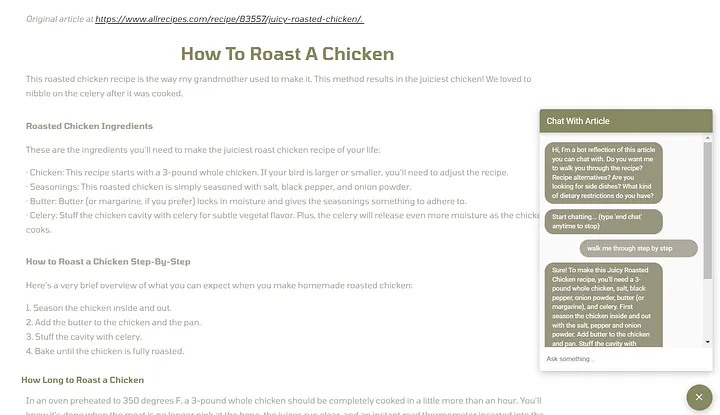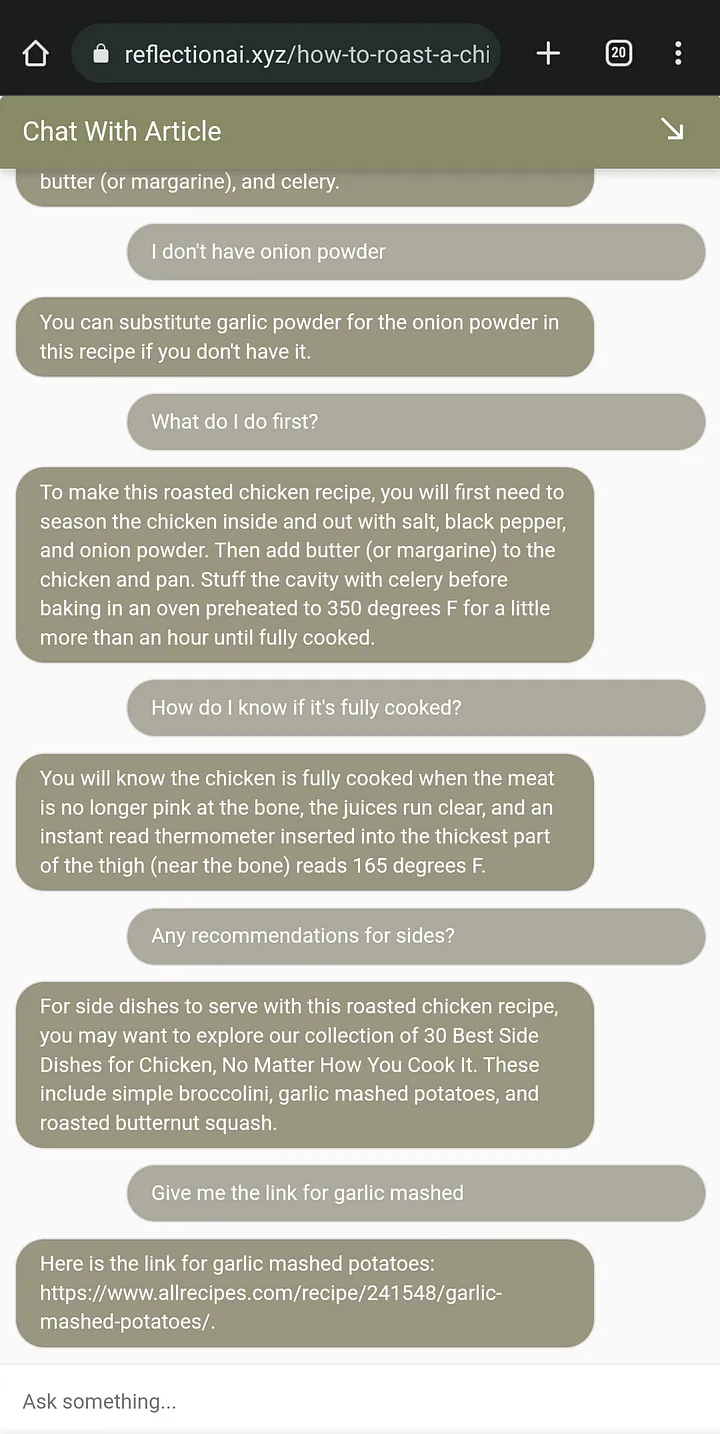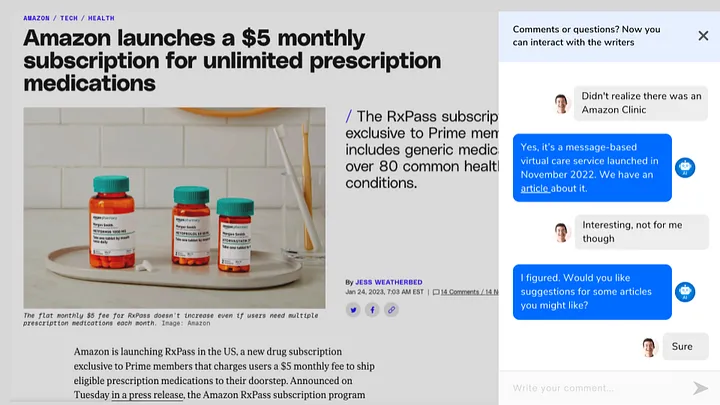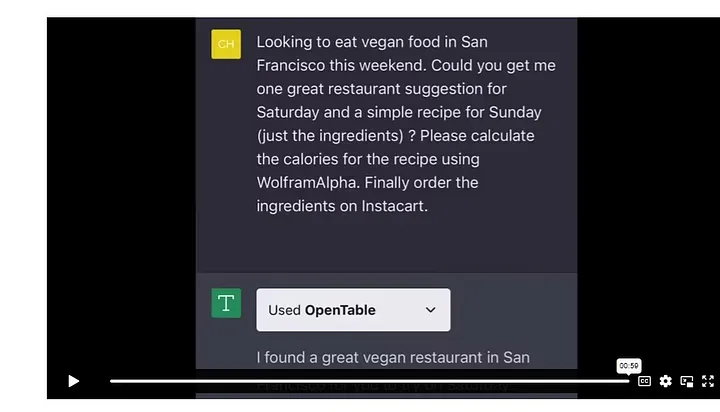If you have a website, you can start using AI to create value and new experiences for your visitors — using the same technology behind ChatGPT. No developer or any knowledge about generative AI needed.
Every blog, company website, and media publisher has content that visitors can “chat with” instead of having to read everything on the page. One example is a recipe article that gives all the content at once, when what you need is step-by-step instructions from an assistant who knows the recipe well.
You get exactly that with an AI chatbot on the same page, through the familiar chat widget you see on many sites.
 A demo chatbot we built for recipe on allrecipes.com that accompanies the website content
A demo chatbot we built for recipe on allrecipes.com that accompanies the website content
Ideally, that assistant can bring in outside cooking knowledge to answer questions that aren’t covered in the recipe. Yes, the generative AI-driven chatbot does that too.
For example, even though the recipe asks for onion powder, the bot relies on outside knowledge to say garlic powder can be a substitute.
 Answers based on the page content when possible, and refers to outside knowledge when needed
Answers based on the page content when possible, and refers to outside knowledge when needed
For background, the generative AI most people are familiar with like GPT4 and ChatGPT use a “foundation” large language model (LLM) that incorporates knowledge from the internet, books and Wikipedia and answers questions in a very general way (and can often be wrong). This LLM can easily be trained or prompted with the “domain-specific” knowledge on your page to answer those questions better than the original model can. When the user asks about something outside of the content, it falls back to the foundation model’s knowledge — making it a very useful complement for anything off-script.
If you have other content (e.g. side dish recipes), the bot will refer to that and give you a channel for endless further engagement. Adding AI & chat to your site turns reading static content into a conversation with an expert. This will only grow as an engagement channel as AI models come more capable.
Think about all the content sites that have a comments section to keep visitors engaged, effectively outsourcing content creation to other visitors. You get that, but personalized, with a chatbot.
 Example of adding AI to a news article
Example of adding AI to a news article
With AI, the same lesson we learned from the internet boom in the 90's and and social media in 2000's apply: early adopters are rewarded with organic traffic while late adopters pay through advertising to catch up.
AI models are already beginning to direct traffic (e.g. ask ChatGPT what car is most reliable). AI-model optimization will become what search engine and social media algorithm optimization is today. You can’t optimize if you don’t have a website or a social media account. By making your content available to AI models as quickly as possible, you plant the seed for organic AI-driven traffic that will overshadow search and social media in coming years.
 OpenAI’s latest plugin ability for ChatGPT is effectively advertising for OpenTable
OpenAI’s latest plugin ability for ChatGPT is effectively advertising for OpenTable
Adding AI to your website is easier than you think — all our examples were built in less than a day and deploy onto a website by copying a couple lines of HTML code.
Messages Improved offers all the services you need to add AI and chat to your website, but many companies are emerging that make it easy to do it yourself. Platforms like Reflection AI (our affiliate company), ChatBase, ChatShape will soon make AI chatbots for websites as common as websites themselves. Basically you train it on the platform and get an embed code to paste into your website editor and you’ll have a chat widget on the page. If you have development experience and want to try building this yourself, OpenAI has a good tutorial.
Generative AI agents are becoming the next evolution of AI for companies, which not only chat on your website but do real world things like automate text messaging/emails (the latest offering at Messages Improved) and using software. Think of AI agents as the 2.0 of AI, with generative AI chatbots & assistants that only chat as 1.5, and foundation LLMs as 1.0.



![Generic SEO [ Sign Up Today ]](/v1/images/bbg/generic-seo/generic-seo-banner-2.jpg)


